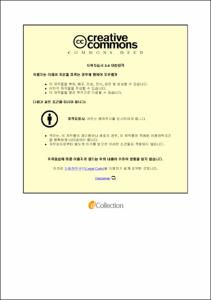Ulsan Univ. Repository
Thesis
General Graduate School
Materials Science & Engineering
1. Theses (Master)
저품위 티탄철석 내 이산화티타늄 순도 향상을 위한 침출 공정 연구
- Abstract
- 티타늄은 세계에서 네 번째로 매장량이 많은 금속 원소로 내식성, 비강도 및 인체 친화성 등 우수한 특성을 보유한 꿈의 소재이다. 국방, 의료, 형상기억합금 등 다양한 산업 분야에 널리 사용되고 있다. 국내 경기도 연천군과 경남 하동군에는 약 2천만 톤의 티탄철석(Ilmenite, FeTiO3)이 매장되어 있지만 이산화티타늄(TiO2)의 품위가 19 wt% 수준으로 티탄늄 제련에 사용하기에 한계가 존재한다. 따라서 현재 제련과 응용 분야에서 사용하기 용이한 48 wt% 이상의 품위를 가진 고품위 티탄철석을 매년 1조원 규모로 전량 수입하여 사용하고 있다.
따라서 본 연구에서는 경기도 연천 지역에 매장되어 있는 19.19 wt%의 저품위 티탄철석을 사용하여 산 및 알칼리 용액을 이용한 침출 공정을 통해 이산화티타늄을 제외한 다른 산화물들을 선택적으로 침출하여 이산화티타늄의 성분비가 48 wt% 이상인 인조 금홍석(Rutile, TiO2)을 제조하는 것이다.
입도 분석 및 X선 회절분석법(XRD, X-ray diffraction), X선 형광분석법(XRF, X-ray fluorometry)을 진행하여 분말의 평균 입도, 분말 내 산화물 순도 및 결정 구조를 분석했으며, 티탄철석 내 높은 조성을 차지하는 산화철(Fe2O3), 산화알루미늄(Al2O3), 산화마그네슘(MgO), 산화망간(MnO)을 침출하기 위해 염산과 황산을 침출액으로 사용하여 각각 침출 공정을 진행하였다.
염산 조건 침출 실험에는 첨가제로 옥살산(Oxalic acid, C2H2O4)을 이용했으며, 254nm 자외선 조사를 통해 산화철의 침출을 가속화하였다. 염산 조건 침출 실험은 침출 시간, 침출 온도, 자외선 조사 유무를 변수로 실험을 진행하였다. 황산 조건 침출 공정은 황산의 농도, 침출 시간을 변수로 실험 진행 후 이산화티타늄의 순도가 높은 조건의 침출 후 남은 고형물을 시료로 사용해 고형물 내 이산화규소(SiO2) 침출을 위해서 수산화나트륨 용액을 이용한 침출 실험을 진행하였다. 수산화나트륨 조건 침출 실험은 수산화나트륨의 농도, 침출 시간을 변수로 진행하였다. 침출 실험 후 조건별 채취한 용액의 농도 계산을 통한 산화물 성분비의 역계산 및 침출 효율을 계산하기 위해 ICP-AES 분석(Inductively coupled plasma atomic emission spectroscopy) 및 AAS 분석(Atomic absorption spectroscopy)을 진행하였다.
그 결과 원광 분말 12 M 염산 농도 및 침출 온도 140도 조건에서 철의 침출 효율은 81.31%, 티타늄의 침출 효율은 17.45%이며 자외선 조사 조건에서 철의 침출 효율은 95.48%, 티타늄의 침출 효율은 12.7%으로 254nm 자외선 조사가 선택적으로 철의 침출 효율을 높이는 효과를 입증했다. 또한 철의 침출 거동 해석을 위해 수축 입자 모델(Shrinking particle model)과 수축 핵 모델(Shrinking core model)을 이용해 속도론적 분석을 진행했다. 황산 조건 침출 실험에서는 6 M 황산 농도 조건에서 철의 침출 효율은 100%이며 이산화티타늄의 성분비는 45.93 wt%로 가장 높고 철산화물 성분비 감소량 대비 이산화티타늄 성분비 증가량 비율이 가장 높아 최적의 조건으로 정했으며, 속도론적 분석을 통해 실험 조건에서 철의 침출 거동은 Chemical reaction controls 방정식을 따름을 확인했다. 6 M 황산 농도 조건 침출 실험 후 남은 고형물을 5 M 수산화나트륨 농도 조건에서 침출 실험을 진행한 결과, 실리콘의 침출 효율은 100%, 이산화티타늄의 성분비는 54.86 wt%로 나타나 실제 산업현장에서 사용 가능한 결과를 나타냈다.
| Titanium is widely buried as the fourth-largest metal element in the world and it is the dream material with excellent corrosion resistance, specific strength and biocompatibility. It is widely used in various industries such as defense, medical and shape memory alloys. About 20 million tons of ilmenite (FeTiO3) are buried in Yeoncheon-gun and Hadong-gun, Republic of Korea. However, the grade of TiO2 is about 19 wt%, so it is a limit for titanium smelting. Therefore, high-grade ilmenite is imported every year for 1 trillion won.
Therefore, the purpose of the study is increasing from the low-grade ilmenite to the high-grade ilmenite of more than 45~48 wt% titanium dioxide so that can be used in industrial fields.
Particle size analysis, X-ray diffraction (XRD) and X-ray flouresence (XRF) were performed to analyze the average particle size of powder, content of oxide and crystal structure in the powder. Leaching processes were conducted by using hydrochloric acid and sulfuric acid as solution for leaching Fe2O3, Al2O3, MgO and MnO.
Oxalic acid was used as an additive in the hydrochloric acid leaching process, and ultraviolet irradiation used for accelerating the leaching rate of iron. The experiment was conducted with variables such as leaching time, leaching temperature, and 254nm UV irradiation. The sulfuric acid leaching process was experimented with variables such as sulfuric acid concentration and leaching time. Sodium hydroxide leaching experiment was conducted for leaching silicon dioxide (SiO2) using a powder under optimum conditions of sulfuric acid leaching process. The experiment was conducted with variables such as sodium hydroxide concentration and leaching time. ICP-AES (Inductively coupled plasma atomic emission spectroscopy) and AAS (Atomic absorption spectroscopy) were performed to calculate the concentration of the element collected by condition after the leaching experiment.
As a result, the leaching efficiency of iron is 81.31% and titanium is 17.45% at 140℃. The leaching efficiency of iron and titanium are 95.48%, 12.7% under the condition of UV irradiation. This demonstrated the effect of 254 nm UV for selectively increasing iron leaching. Shrinking core model (SCM) and Shrinking particle model (SPM) were used to analysis leaching behavior of iron. The leaching efficiency of iron was 100% under the 6 M sulfuric acid condition and the composition ratio of TiO2 was the highest at 45.93 wt%, so it was determined as the optimum condition. The leaching efficiency of silicon was 100% in the sodium hydroxide leaching experiment and the composition ratio of TiO2 was 54.86 wt%.
- Issued Date
- 2022
- Awarded Date
- 2022-02
- Type
- dissertation
- Alternative Author(s)
- Park, Sang chil
- Affiliation
- 울산대학교
- Department
- 일반대학원 첨단소재공학과
- Advisor
- 김선정
- Degree
- Master
- Publisher
- 울산대학교 일반대학원 첨단소재공학과
- Language
- kor
- Rights
- 울산대학교 논문은 저작권에 의해 보호 받습니다.
- Appears in Collections:
- Materials Science & Engineering > 1. Theses (Master)
- 파일 목록
-
-
Download
 200000596300.pdf
기타 데이터 / 3.55 MB / Adobe PDF
200000596300.pdf
기타 데이터 / 3.55 MB / Adobe PDF
-
Items in Repository are protected by copyright, with all rights reserved, unless otherwise indicated.